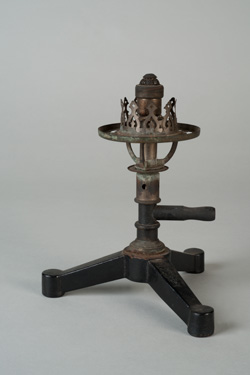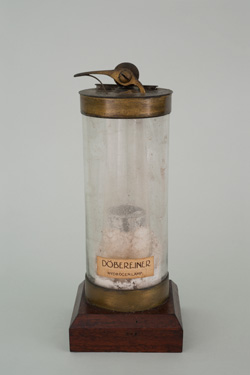Lighting: items 80d, f.ii, i, l
The various lamps shown had applications in mining - the famous Davy lamp (item 80d) with the wire cage surrounding the flame to suppress ignition of methane (“firedamp”) in coal mines; domestic illumination (the argand burner, item 80f. ii) which fed air into the centre of the flame, thus assisting combustion of oil vapour and giving brighter light); and various laboratory and pharmaceutical applications of heat (the spirit lamp, burning alcohol, item 80l, which could be used to heat small quantities of liquid, or to sterilize needles).
The Dobereiner hydrogen lamp (item 80 i) was invented by Johann Wolfgang Dobereiner (1780 - 1849) who observed that hydrogen would ignite when mixed with oxygen over spongy platinum. This was the basis of a method of ignition for coal gas burners, with the hydrogen being generated by the action of sulphuric acid on zinc. For decades, most gas lamps required a lamplighter to walk round the streets turning on every lamp at lighting up time. Nowadays we used piezoelectric sparks and pilot lights.



